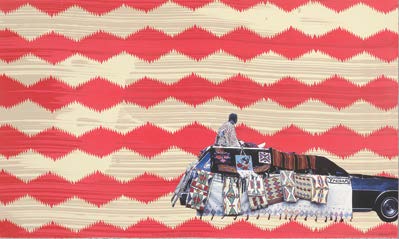Positive Fragmentation: From the Collections of the Jordan D. Schnitzer and His Family Foundation will feature more than 180 prints by contemporary women artists who employ a strategy of fragmentation in their artistic process. Some of the works focus their attention on the human body, as in Louise Bourgeois’s Anatomy series (1990) or Wangechi Mutu’s Histology of the Different Classes of Uterine Tumors (2006). The later combines glossy fashion magazine photographs with medical illustrations to reimagine patriarchal stereotypes as powerful female avatars who stare back at oppressive social norms. Other artists like Nicola López and Sarah Morris leverage their experiences of the contemporary city to rearrange elements of the urban landscape to better capture the vibrancy of daily life. With a highly conceptual approach, Jenny Holzer’s Inflammatory Essays (1979–82) isolates fragments of bold and sometimes confrontational statements to subvert the rigid ideologies from which they borrow.
A notable strength of the exhibition is its focus on women artists of color who have been underrepresented in the museum’s permanent collections and in its exhibition program. Artists like Mickalene Thomas challenge historical narratives by creating compositions that echo those of nineteenth-century European painters but through wholly novel techniques and media, combining woodblock, screen-printing, and digital photography. Wendy Red Star, an indigenous American artist of the Crow Nation, creates colorful, often playful prints that nonetheless convey the struggles of indigenous marginalization and the legacy of European colonization on the continent by combining appropriated indigenous motifs with images of everyday life on the reservation. Ethiopian-born Julie Mehretu creates large-scale abstract compositions that speak to the traditions of European and American abstraction while compounding these histories with contemporary global concerns regarding climate change and migration.




